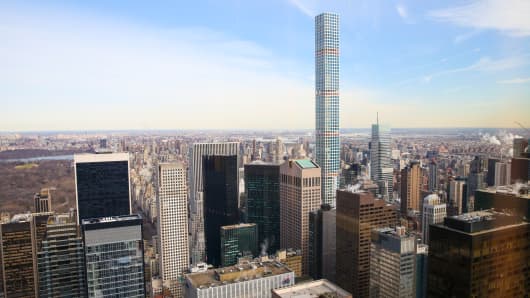The tallest residential structure in the Western Hemisphere sits at 432 Park Avenue in New York City.
Standing at nearly 1,400 feet, there are 141 apartments for sale in this building, where the average selling price is $21 million, 10 times the price of an "average" Manhattan apartment. A representative for the building said it is over 70 percent sold, though only a few dozen of those sales have closed so far. A recent report in Real Deal indicated that there are anecdotal signs that "sales have plateaued" in the building, including the fact that the developers are dividing some of the full-floor apartments into smaller units to reach buyers interested in a lower price point and boost sales.
New York real-estate prices have recovered with a vengeance in the past year but buyers may be starting to reach their limit.















